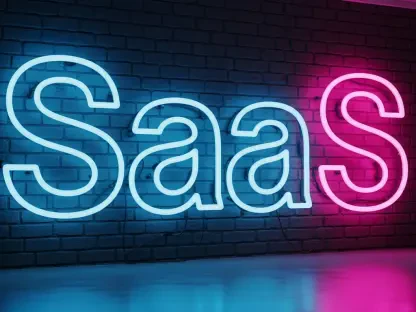Imagine a world where coordinating a sprawling event with dozens of moving parts—vendors, schedules, equipment, and marketing—feels as intuitive as rearranging sticky notes on a wall, and this is the promise of modern project management tools in an era where team collaboration often spans continents and time zones. Among these tools, Trello stands out as a visual, user-friendly solution that transforms chaos into clarity. This review delves into Trello’s evolution as a leading project management platform, examining its key features, real-world impact, and potential to shape how teams work together in dynamic industries like event planning.
Core Features and Functionalities
Visual Task Organization with Boards and Cards
Trello’s defining strength lies in its simplicity, using a board-list-card system to mimic the tactile experience of physical task boards. Each board represents a project, with lists categorizing stages or themes, and cards acting as individual tasks that can be dragged and dropped to reflect progress. This visual approach allows teams to instantly grasp priorities and workflows without sifting through dense text or spreadsheets.
Beyond basic organization, cards can be enriched with detailed data, including descriptions, checklists, due dates, and file attachments. This capability ensures that every task, no matter how small, carries all necessary context, reducing miscommunication. Such flexibility makes the platform adaptable to both quick brainstorming sessions and intricate project timelines.
Real-Time Collaboration and Seamless Access
Another cornerstone of Trello’s appeal is its real-time update mechanism, which ensures that any change made by one user—be it moving a card or adding a comment—is instantly visible to all collaborators. This eliminates the frustration of outdated views or manual refreshes, keeping everyone aligned on project status. The immediacy of updates fosters a sense of connection among remote teams.
Equally important is Trello’s cloud-based design, requiring no software installation and offering accessibility across devices. With dedicated mobile apps for iPhone and Android, professionals can manage tasks from anywhere, whether at an event site or during a commute. This on-the-go functionality caters to fast-paced environments where timing is critical.
Customizable Privacy and Team Integration
Trello also excels in balancing collaboration with control through its privacy settings. Board owners can invite specific team members, vendors, or stakeholders, choosing whether to keep boards private for internal use or public for broader visibility. This adaptability suits diverse scenarios, from confidential planning to open community projects.
Such settings empower teams to tailor access based on project needs, ensuring sensitive information remains secure while still facilitating input from external parties. This balance is particularly valuable in industries involving multiple contributors, where clear boundaries and fluid communication must coexist.
Market Growth and Industry Adoption
Trello’s rise in the project management space reflects a broader trend toward intuitive, accessible collaboration tools. With a user base now numbering in the millions, the platform has seen remarkable growth spurts, often driven by endorsements from influential voices in business and technology. This momentum underscores a growing demand for tools that simplify complex coordination without steep learning curves.
The platform’s appeal spans various sectors, from startups to established firms, as businesses increasingly prioritize digital solutions that enhance productivity. Trello’s ability to cater to small teams and larger operations alike positions it as a versatile player in a competitive market, meeting the needs of an ever-evolving workforce.
Particularly notable is how Trello aligns with the shift toward remote and hybrid work models. Its design supports distributed teams by providing a centralized hub for tracking progress, a feature that resonates with organizations navigating modern workplace challenges. This alignment with current trends suggests sustained relevance in the coming years.
Practical Impact in Event Planning
To understand Trello’s real-world value, consider its application in event planning, a field rife with logistical hurdles. A compelling example involves a photo app company tasked with managing a high-profile activation at a major film festival, in partnership with a prominent tech brand. The complexity of coordinating travel, equipment, and promotional efforts demanded a streamlined approach.
Using Trello, the project lead created dedicated boards with lists for each category, from lodging arrangements to social media messaging. Cards were moved seamlessly from “in progress” to “completed,” offering a clear overview of the event’s status at any moment. The lead praised the tool for providing a comprehensive perspective, simplifying oversight of multifaceted tasks.
This case highlights Trello’s strength in handling dynamic, multi-stakeholder projects where clarity is paramount. Its adaptability extends beyond events to other industries like marketing or product development, where juggling diverse responsibilities is the norm. Such versatility cements its utility across professional landscapes.
Challenges and Areas for Improvement
Despite its strengths, Trello is not without limitations, particularly when scaled to very large projects or expansive teams. The simplicity that makes it accessible can become a constraint when managing hundreds of tasks, as the visual interface may feel cluttered or insufficient for intricate dependencies compared to more robust enterprise tools.
Additionally, users new to visual task management might encounter a learning curve, especially if accustomed to traditional software with linear layouts. While intuitive for many, the shift to a card-based system can initially disrupt established workflows, requiring adjustment time.
Lastly, as a free tool with optional premium features, questions arise about long-term support or the pace of updates for non-paying users. While the community and developers actively address feedback, the lack of advanced functionalities in the base version might push some organizations to seek alternatives for specialized needs.
Future Potential and Innovations
Looking ahead, Trello’s trajectory appears promising, with potential for deeper integrations with other productivity platforms to enhance its ecosystem. Features like advanced automation or compatibility with data analytics tools could elevate its appeal for larger enterprises seeking comprehensive solutions over the next few years, starting from now through 2027.
The platform’s role in shaping project management practices also seems set to grow, especially as remote work remains a fixture in many industries. Enhancing capabilities for virtual collaboration, such as video call embeds or real-time brainstorming modules, could position Trello as a frontrunner in this space.
Moreover, catering to niche sectors with tailored features—think custom templates for construction or healthcare—might broaden its reach. As user needs evolve, Trello’s ability to adapt will determine its staying power, potentially redefining how teams approach coordination in specialized fields.
Final Thoughts and Recommendations
Reflecting on this evaluation, Trello proves to be a standout tool for its visual simplicity and real-time collaboration, making it a go-to for event planning and beyond. Its accessibility across devices and customizable privacy options add to its charm, serving teams of varying sizes with ease. The platform’s rapid adoption speaks volumes about its alignment with modern productivity demands.
For those considering adoption, the next step is to experiment with Trello on a small-scale project to gauge its fit within existing workflows. Exploring integrations with complementary tools could unlock additional efficiencies, addressing gaps in advanced features. Keeping an eye on upcoming updates from the development team is also advisable, as enhancements might tackle current scalability concerns.
Ultimately, the journey with Trello suggests a broader implication: project management tools must evolve to balance simplicity with depth. Teams are encouraged to leverage community forums for tips on maximizing the platform’s potential, ensuring it serves as a bridge rather than a barrier in achieving seamless collaboration.









